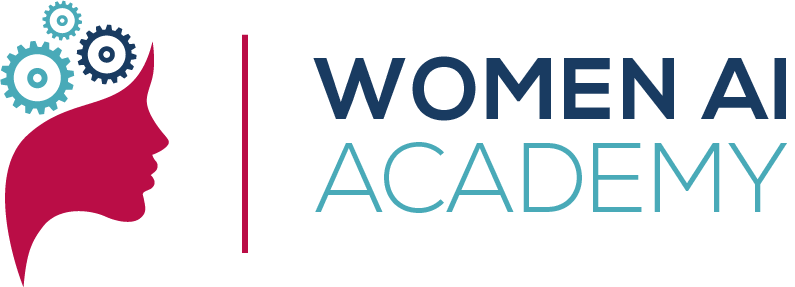Feb 26
/
Naz
Is Boston Dynamics robot inadvertently designed to bite young women from pursuing careers in AI?
As someone who has keenly followed Boston Dynamics' robotic innovations for over a decade, my fascination was initially sparked by the same viral videos that captured the world's attention on social media.
Now celebrating forty years of groundbreaking work, Boston Dynamics epitomizes the zenith of robotics innovation. Spot, metaphorically speaking, could be likened to a venerable figure of 280 years in dog years, highlighting not only the company's storied history but also the relentless advancement and growing indispensability of artificial intelligence.

However, my reflections on this milestone extend beyond mere technological accomplishments to consider the human element behind these advancements. Despite Boston Dynamics' professed commitment to ethics, fairness, and diversity, a closer inspection reveals a glaring gender imbalance within their team. Out of a team comprising fifty individuals, I could identify only seven women. This figure, representing a mere 14% involvement of women in AI development, is a stark indicator of the persistent gender gap in the tech sector, signaling a critical area for introspection and action among tech investors and leadership.
This observation raises an essential question about the broader tech industry's ability to attract, retain, and empower women. While Boston Dynamics’ robotic innovations like Atlas and Spot are celebrated worldwide, the disparity in the makeup of the team behind these marvels points to a missed opportunity for fostering a more inclusive environment.
The consequences of a non-gender-balanced team are profound:
- Echo Chambers and Confirmation Bias: Homogeneity in teams can reinforce existing beliefs, creating blind spots in innovation and problem-solving.
- Limited Creativity and Innovation: Diverse teams bring varied perspectives that enhance creativity, leading to more innovative and comprehensive solutions.
- Unconscious Bias and Exclusion: A lack of gender diversity may allow unconscious biases to persist, sidelining potential contributions from talented individuals.
Conversely, gender-balanced teams offer significant advantages:
- Enhanced Problem-Solving: They provide a broader range of perspectives, leading to more thorough analysis and innovative solutions.
- Increased Innovation and Market Reach: Diversity can uncover unmet needs, tapping into wider market segments and fostering greater innovation.
- Improved Brand Image: A commitment to diversity enhances a company's reputation, attracting talent and positioning it as a responsible industry leader.
Yes, increasing the representation of women in AI teams can lead to enhanced
- ethical considerations,
- greater financial success,
- improved sustainability for businesses.
- more kids for the society. (a side effect of fostering female-friendly work environments can contribute to societal benefits, such as supporting family growth)
Let’s eliminate gender-gap with help of AI.
Watch here the 40 years of evolution
Write your awesome label here.
WOMEN AI ACADEMY
Women AI Academy is a gender-equality and technology driven learning & development organization
Site Terms & Info
ETHOS AI Training & Consulting GmbH
Weihenstephanerstr.1281673
Munich-Germany
We are driven by the vision of making AI both ethical and accessible to everyone
Copyright © 2024 Brought to you by Ethos ai AI Training & Consultancy GmbH
Ali Hessami is currently the Director of R&D and Innovation at Vega Systems, London, UK. He has an extensive track record in systems assurance and safety, security, sustainability, knowledge assessment/management methodologies. He has a background in the design and development of advanced control systems for business and safety-critical industrial applications.
Hessami represents the UK on the European Committee for Electrotechnical Standardization (CENELEC) & International Electrotechnical Commission (IEC) – safety systems, hardware & software standards committees. He was appointed by CENELEC as convener of several Working Groups for review of EN50128 Safety-Critical Software Standard and update and restructuring of the software, hardware, and system safety standards in CENELEC.
Ali is also a member of Cyber Security Standardisation SGA16, SG24, and WG26 Groups and started and chairs the IEEE Special Interest Group in Humanitarian Technologies and the Systems Council Chapters in the UK and Ireland Section. In 2017 Ali joined the IEEE Standards Association (SA), initially as a committee member for the new landmark IEEE 7000 standard focused on “Addressing Ethical Concerns in System Design.” He was subsequently appointed as the Technical Editor and later the Chair of P7000 working group. In November 2018, he was appointed as the VC and Process Architect of the IEEE’s global Ethics Certification Programme for Autonomous & Intelligent Systems (ECPAIS).
Trish advises and trains organisations internationally on Responsible AI (AI/data ethics, policy, governance), and Corporate Digital Responsibility.
Patricia has 20 years’ experience as a lawyer in data, technology and regulatory/government affairs and is a registered Solicitor in England and Wales, and the Republic of Ireland. She has authored and edited several works on law and regulation, policy, ethics, and AI.
She is an expert advisor on the Ethics Committee to the UK’s Digital Catapult Machine Intelligence Garage working with AI startups, is a Maestro (a title only given to 3 people in the world) and expert advisor “Maestro” on the IEEE’s CertifAIEd (previously known as ECPAIS) ethical certification panel, sits on IEEE’s P7003 (algorithmic bias)/P2247.4 (adaptive instructional systems)/P7010.1 (AI and ESG/UN SDGS) standards programmes, is a ForHumanity Fellow working on Independent Audit of AI Systems, is Chair of the Society for Computers and Law, and is a non-exec director on the Board of iTechlaw and on the Board of Women Leading in AI. Until 2021, Patricia was on the RSA’s online harms advisory panel, whose work contributed to the UK’s Online Safety Bill.
Trish is also a linguist and speaks fluently English, French, and German.
In 2021, Patricia was listed on the 100 Brilliant Women in AI Ethics™ and named on Computer Weekly’s longlist as one of the Most Influential Women in UK Technology in 2021.

